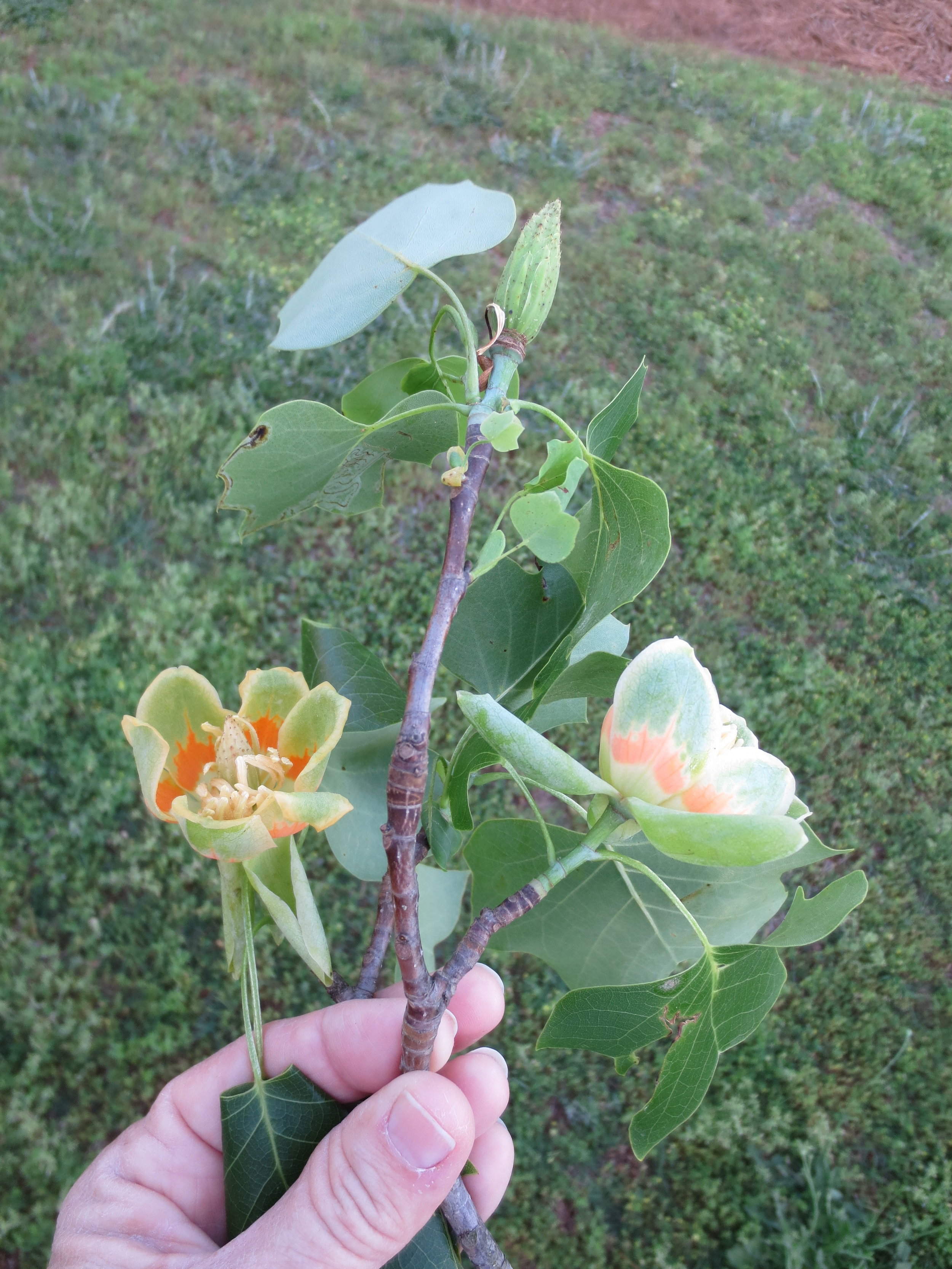The Liriodendron tulipifera tree is not related to tulips, but the lovely blooms bear a slight resemblance, leading to the common name “tulip poplar.” The yellow, orange and green blossoms are carried in the upper reaches of the trees, so you are most likely to see them when wind blows them off.
Tulip poplars are the second-most commonly lightning-struck tree, behind sycamores. Oaks are number three. There are various theories as to the reason for their lightning attraction. First is their height. Mature trees can reach 120 feet, although they are typically 75-85 feet in my area. The second theory pertains to their sap’s high water content. It is probably a combination of the two.
Plant a solitary tulip poplar at the top of a hill and you are inviting a lightning hit. Lightning causes the interior water to expand into steam. It can cause your tree’s bark to split vertically or even explode, sending splinters in all directions. Either of these cause eventual tree death.
